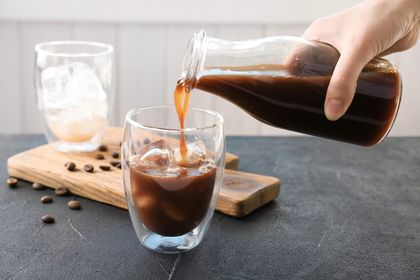
Cold Brew Vs Cold Drip Coffee: What’s The Difference?
Share
Coffee is definitely one of the most popular beverages. This means that people are always looking for new ways of enjoying this drink. Cold brewing is one of the latest trends in the exciting world of coffee. Unlike iced coffees, cold-brewed coffee is prepared using different methods including cold brew and cold drip.
If you have heard about these cold-brewed coffees, and would like to add them to your menu, or are simply interested in learning more about each one, you have come to the right place. Read on below to find out more about cold brew vs cold drip coffee.
What Is Cold Brew Coffee?
Cold brew coffee is simply coffee that has been brewed in cold water. To extract caffeine and oils from the coffee grounds, cold brew coffee uses time instead of heat. This type of coffee is made using an immersion method, in which the coffee grounds are left to brew in cold water for an extended period of time – normally between 18 and 24 hours. Afterwards, the brew is filtered and served as a concentrate over ice.
What Is Cold Drip Coffee?
Unlike the type of cold-brewed coffee described above, cold drip coffee is made through a method that involves dripping cold/iced water over coffee grounds, where it is absorbed and extracted, before being collected.
This coffee brewing method relies on the use of a special apparatus referred to as a drip tower. Simply put, the iced water slowly drips onto the coffee grounds, and the infused water drips down into a collection jar. This entire process takes anywhere between 3.5 and 12 hours. Cold drip coffee is normally served as an espresso sized shot, over ice.

Difference Between Cold Brew And Cold Drip
Due to the different methods of preparation, cold brew coffee is very different from the cold drip variant. For starters, cold brew coffee is much lighter than cold drip coffee. The latter has a fuller and richer body, in comparison to the former’s floral flavour.
In terms of preparation, cold drip coffee can be prepared in less time. However, cold brew coffee can easily be prepared at home, using a French press, without the use of any specialist apparatus.
How To Make Cold Brew Coffee?
• The first step is to coarsely grind your coffee beans – to the same size as bread crumbs
• Get a mason jar and then add the coffee and water
• Stir up the mixture and leave it to steep for anywhere between 18 and 24 hours – using a cold brewer and a pre-brewed concentrate can help reduce brewing time
• Using a sieve, strain the mixture into a large bowl, and get rid of the remaining coffee grounds
• Strain the solution back into the jar using a sieve with cheesecloth or muslin tucked in it
• Strain the moisture over and over again until you can see any residue at the bottom of the jar
• Serve the resulting solution over ice
How To Make Cold Drip Coffee?
The process of making cold drip coffee is much simpler than the process described above.
• Get your drip tower and put the cold water and coffee grounds in place
• Leave the set up for the desired period of time, and allow the slow drip, grind size and gravity to work their magic!
It is worth noting that the flavour of the resulting brew is determined by the amount of time it is left to brew – anywhere between 3.5 and 12 hours – and grind size. Simply put, the longer the brewing process, the richer the flavour and taste of the resulting brew.
Final Thoughts
Cold brewing methods are here to stay. The use of cold water in brewing coffee creates a lighter and more floral drink, with minimal bitterness, as cold water extracts fewer oils and acids from the coffee beans than hot water.
Buy Coffee Equipment And Tools From The Artisan Barista!
If you are interested in preparing top quality cold brew coffee, you will need the necessary equipment, including a drip tower or cold brew coffee maker.
Please feel free to browse our selection of coffee equipment, and don't hesitate to contact us if you have any questions.
